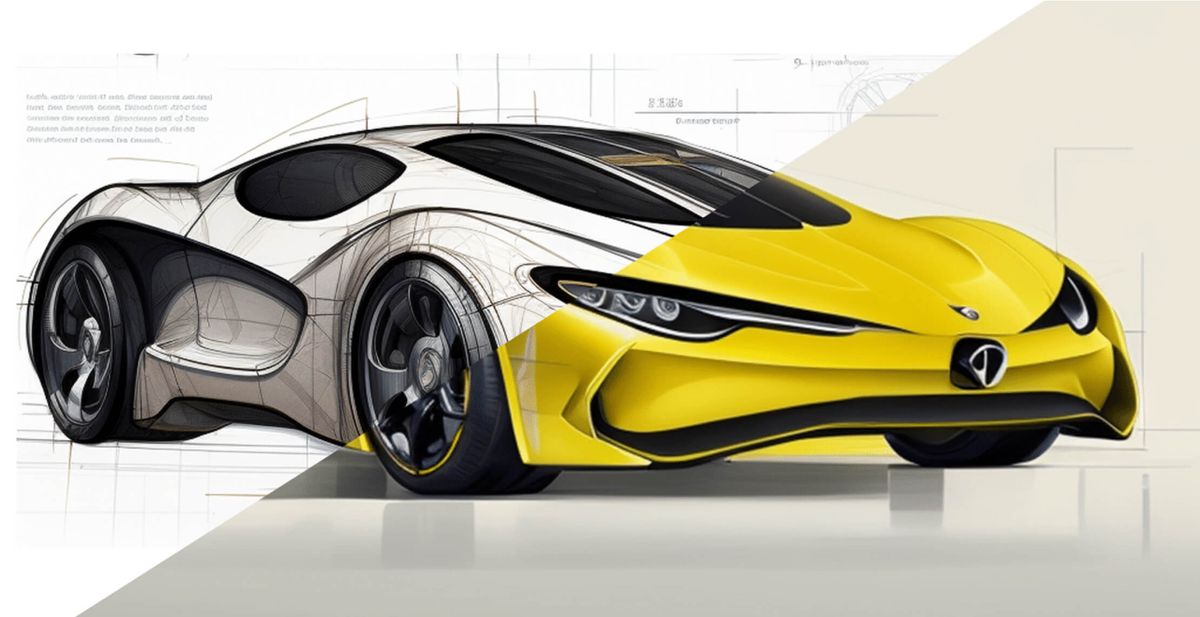
The automotive sector is traditionally seen as a bastion of mechanical and electrical engineering. Today, AI is reshaping every facet of the vehicle lifecycle. From design concept to finished vehicle, safety engineering to full self-driving, the entire automotive product lifecycle and driving experience is being transformed by AI.
Companies are leveraging AI to produce content, generate images and videos, and even test algorithms with synthetic data. Such advances are emblematic of the way generative AI is exponentially augmenting productivity and stimulating innovation.
NVIDIA is one of a handful of companies providing the infrastructure and platform to enable automakers to harness the power of generative AI across their organizations – slashing development timelines, unlocking new creative possibilities, and driving major productivity gains.
NVIDIA's CEO, Jensen Huang, likens the current AI-driven transformation to the evolution of mobile applications with the onset of GPS and other sensors in smartphones. Foundational AI models, such as ChatGPT for text and Stable Diffusion for images, are akin to these sensors, creating a bedrock on which innovators can build the next wave of applications.
“Generative AI, large language models and recommender systems are the digital engines of the modern economy,” - Jensen Huang.
Redefining Automotive Design and Artistry
Automakers are tapping into this technology in innovative ways. Toyota has developed an AI technique to incorporate engineering parameters right from the earliest stages of the design process.
NVIDIA’s AI infrastructure and software development kits provide the foundation enabling companies to build and deploy custom generative AI. The NVIDIA TAO toolkit helps develop robust models using techniques like transfer learning on automotive datasets. NVIDIA Picasso offers a cloud-based platform for constructing tailored generative models.
The conventional design process in the automotive industry is a lengthy and linear affair. Artists search for inspiration, draft sketches, and then convert these concepts into 3D models. For designers, NVIDIA Omniverse acts as a portal to access leading generative engines. Artists can rapidly explore design inspirations prompted by natural language descriptions. Modeling tedious workflows are automated – 2D sketches instantly transformed into NURBS models, helping artists visualize in 3D quicker than ever.
New Experiences Powered by LLMs
Brands are using conversational AI assistants like ChatGPT, for brainstorming, feedback, and advertising strategies. NVIDIA's NeMo framework, tailored for both language and image applications, is emerging as a game-changer for automakers, aiding them in devising next-gen chatbots for superior customer interactions. Mercedes is pioneering an AI voice assistant using natural language generation.
Revolutionizing Marketing and Sales with AI
Marketing teams also gain creative superpowers. A McKinsey report suggests a staggering $950 billion productivity boost from generative AI in marketing and retail sectors globally.
Ad giant WPP is partnering with NVIDIA to build a generative content engine for the auto industry. Their tool allows creative teams to quickly generate visual assets, digital scenes, and tailored ads leveraging trained datasets. This helps OEMs efficiently produce personalized, cutting-edge campaigns.
DENZA, the electric vehicle brand of BYD and Mercedes-Benz, is utilizing WPP’s Omniverse-based tools to build AI-powered car configurators that redefine the customer experience.
Manufacturing Gets a Digital Facelift
Automakers like BMW are integrating NVIDIA's Omniverse and generative AI to build digital replicas (or "twins") of their manufacturing units. This facilitates meticulous planning in simulated environments, ensuring smoother real-world operations, reducing costs, and minimizing disruptions.
A Smarter Driving Experience
The breakthroughs aren’t limited to the factory floor. Generative AI is playing a starring role in the development of autonomous driving as well. NVIDIA researchers employ neural radiance fields (NeRFs) to turn AV sensor data into fully interactive 3D environments for scaled testing and validation.
The emergence of transformer models and the advancements enabled by NVIDIA's accelerated computing mark a watershed moment. While it might be premature to fathom the complete spectrum of this paradigm shift, one thing is evident: generative AI is revolutionizing the automotive industry.
While still early days, it’s clear that generative AI ‘copilots’ are enabling automakers to achieve better, faster and cheaper operations. As this new computing model continues to advance, so too will the innovations shaping the vehicles of the future.

